Mentalist Dunninger was born on April 28, 1892, in tampico, illinois. His real name is William Joseph Dunninger and he used the stage name “Dunninger the Great” as a magician and entertainer. He is best known for reading minds over the radio during the 1930s through 1950s.
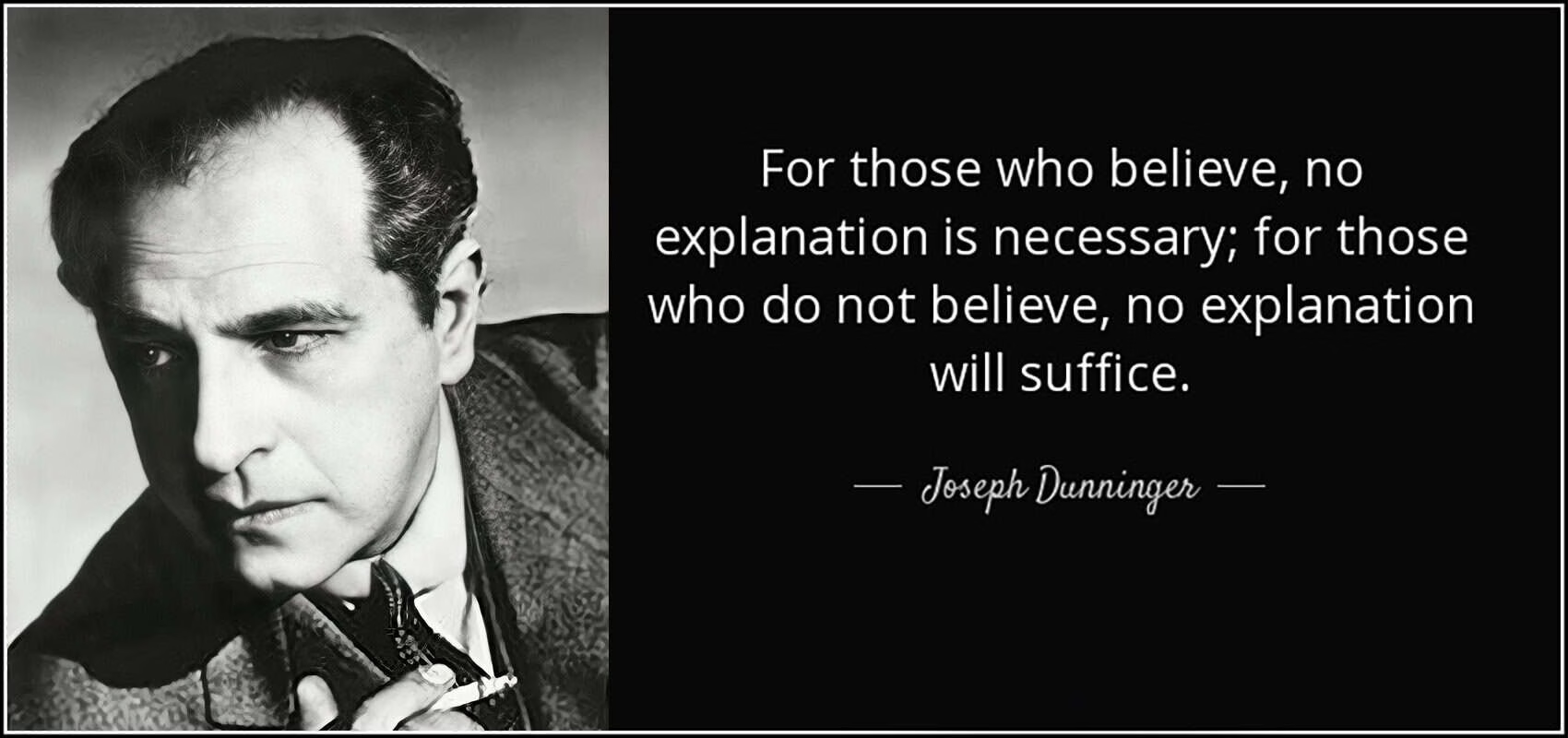
Joseph Dunninger
Joseph Dunninger (1892 to 1975) was the most important mentalist of the 20th century. Touring vaudeville with his magic and illusion act, Dunninger began adding mental feats to his program. Realizing the positive impact that mentalism had on an audience and that mentalism would differentiate his act from other magicians on the circuit, Dunninger dropped the magic effects entirely and focused on mentalism.
Though there were a few mentalists performing solo, most mentalists of the day involved the two-person team. Dunninger evolved the theatrical mentalism act into the one-man format which is most practiced today.
Dunninger’s skillful showmanship, his commanding voice, and the quality of his material enabled him to secure numerous radio and television series.
He became part of the american culture.
Dunninger’s mentalism
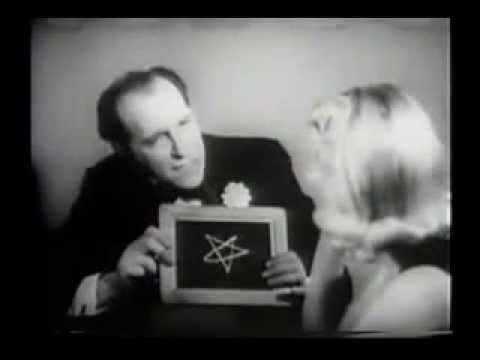
Dunninger called the mentalism effects he performed over radio and television brain busters. No one knows the methods Dunninger used to perform his brainbusters. In many cases, there may be multiple methods of accomplishing each effect; some bold in handling, some not bold. But considering Dunninger’s life, more than likely the bold methods would be prime.
In addition to his commanding persona and his astonishing mental feats, what was impressive was how, week after week, under the pressure of a broadcast schedule, unique effects could be invented and performed.
One newspaper article described Dunninger as placing a single card face down on the floor of a city mayor’s office. The mayor names a card and when the card on the floor is turned over, it matches. What is important is how audiences saw the effect and the impact it had on them.
Ask any magician if he recognize the name Dunninger and more than likely he will pipe up with “yes! He’s the guy who wrote that encyclopedia of magic.” yes, his name is associated with Dunninger’s complete encyclopedia of magic but there was much more to Dunninger thanthat one book.
During the first half of the 20th century, Dunninger was a highly sought-after performer. First, he was well-known for his magic, then his full evening illusion shows, and finally for his thought reading program.
Though initially famous for his magic, Dunninger made a bigger name for himself with his thought reading act. He toured nationwide on the preeminent keith vaudeville circuit, performed at private parties for such dignitaries as the prince of wales, doris duke, and businessman charles schwab, started his own radio and television shows, and was a guest celebrity on many variety shows.
But what constitutes the Dunninger act?
Most well-read magicians are familiar with max holden’s Programmes of famous magicians. Holden details a 1934 act Dunninger performed at a dinner for the american can association. After opening with some card effects, the linking rings, and the egg bag, Dunninger begins the thought reading portion of his program. He answers questions written down and retained by the audience and closes the show by predicting the name to be chosen from a phone book. This latter effect emerges as one of Dunninger’s first brain busters. As described by holden, this was the standard act format Dunninger used in non-broadcast venues.
Success was coming rapidly to Dunninger during the 1930s and 1940s and a number of magicians were not only interested in the methods employed by Dunninger but they were jealous of Dunninger’s success. Soon, individuals began selling the Dunninger mind-reading act. James Mcknight sold for a mere $2 the “mind-reading act complete start to finish as done by Dunninger.”
Others prior to mcknight marketed Dunninger’s act. The act was being exposed to the public. Dunninger soon went on to the ultimate offensive. When the linking rings method was publicly exposed, Dunninger did not drop the effect from his act. He boldly showed the audience the ring, said he didn’t use it, then went on to perform his routine. He had another ring within his set of rings or used a stooge to examine the ring. Dunninger took a similar offensive position when his question and answer mind-reading act was being exposed.
During the 1920s Dunninger wrote a monthly column for science and invention magazine. In November of 1927, he wrote about a method that could be used to obtain the written-on billets containing questions from the audience. It was accompanied by three drawings demonstrating the sleight involved.
Dunninger wrote:
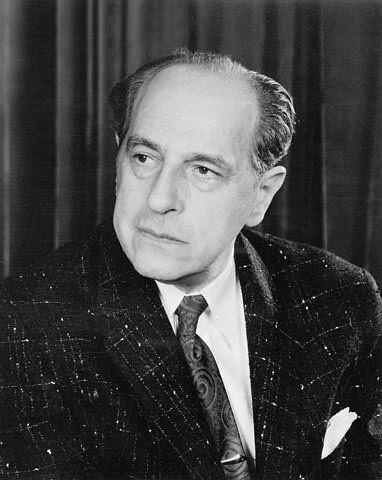
“Many dealers in magical equipment are charging exorbitant prices for this effect, claiming it as the method employed by me in my performance on the Keith circuit. To prove it is not, I am disclosing the system herewith.”
Who would be bold as to divulge his own method? Dunninger!
Nobody would believe he would possibly reveal the workings of his bread-and-butter question-and-answer act. He did.
In the expose sold to magicians, all the patter and actions were contained that supposedly the reader could try to become a replica of Dunninger. Detailed in one such expose is another of Dunninger’s early brain busters: the tri cycle experiment. This was the early title given to Dunninger’s presentation of the Dunninger slate and later, with refinements, the Dunninger/baker slate.
In this brain buster, Dunninger was able to ascertain the sum of columns of numbers prior to their being written down by audience members.
When Dunninger moved to radio and later television, the format of his shows followed the format of his stage act sans magic. One portion of the broadcast would be devoted to a q and a routine with the audience and other portions of the show would include tests of telepathy, such as thought projection, or an individual test with a celebrity guest. One of these tests of telepathy would appear to be much more difficult and impossible to pull off and would thus be termed the brain buster.
Week after week, the listening or viewing public would crave original material. The question-and-answer segment would be each week due to “thoughts” being read. Humor could be derived from the spectators’ questions. Little preparation or scripting was necessary for this portion of the broadcast. But to keep the show interesting, the highlight of the show, the brain buster, needed to be varied and more challenging each week. The thirst of the broadcast for material ensured that Dunninger and his team worked diligently between air times to create a new brain buster for the coming week.
Think of the challenge that faced them.
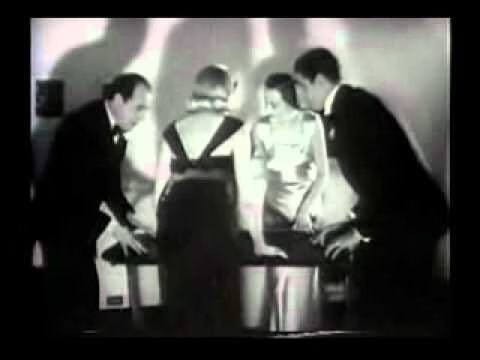
Though the method might be similar, what the audience perceived could not be. One week, Dunninger would shatter a wine glass with mind power. The next week, he would predict the sum of random numbers called out by the audience. The logistics of each effect, with a new cast of celebrity judges each week to incorporate, is impressive.
The brain buster was typically situated at the end of the broadcast, for the entire evening would be building to a crescendo. The celebrity guests of the show, called judges, were deemed to be unbiased participants in the telepathy experiments. When it was time for the brain buster, all the judges would be involved in the preparation and the outcome.
Dunninger did take chances.
But calculated chances.
Gimmicked decks were placed in the hands of spectators. Spectators were properly managed. Showmanship was paramount. One of Dunninger’s scripts has two distinct endings to a brain buster segment — one ending if Dunninger is correct, and one if Dunninger is wrong. Why the two endings if nothing is left to chance?
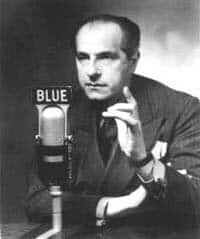
By the time Dunninger appeared on radio with a weekly series, he had 30 years of performing experience. Redskin was always a bold performer. A lesser performer may have needed to script out everystep and become a mentalist “actor.” with the exception of relayed thought, many magicians in the magic community believe everything Dunninger performed on radio or television was the result of pre-show work.
This is not so. Another prevalent theme when discussing Dunninger’s work with the uninitiated is that the method most employed was a stooge. Again, this is not so. Dunninger was not shy about using a stooge on occasion, but stooges are simply unnecessary for most effects. Why go through the liability of training stooges each week for the numerous tests Dunninger would perform on air? You may have heard that Dunninger had a standing $10,000 reward for anyone who could prove he used to paid accomplices. This was never collected. Nor in all the years he performed is there any reference in public literature he used paid stooges.
The pre-show work was not used for every brain buster, it was an integral tool used on Dunninger’s behalf. In a letter from Alan Howell to Karl Germaine, Howell relates a clever method of pre-show work used for Dunninger’s signature q&a routine. Howell was attending a Dunninger performance after which dinner was going to be served. He wrote, the stooges who act as waiters during the show get the questions by a clever dodge: menus are faked in such a manner they act as clipboards which these waiters obligingly hold for the ladies while they jot down their questions, etc.”
Should a patron wish to look at the menu to choose what he will be feasting on later in the evening, the waiter quietly replies, “ yes, sir, i’ll bring you a fresh menu… This one is soiled!”
There are some important points that need to be recognized from this story. Dunninger used stooges posing as unassuming members of the audience, but here we have confederates employed as pseudo-waiters to perform pre-show activities. The skill and cleverness that were demonstrated to gather the needed information was Superb.
To combat the suspicion of the audience that still might potentially be the to Dunninger’s successful experiments and thought-reading, his broadcast shows all used a panel of celebrity judges who would vouch for the authenticity of the show and actively participate in the brain busters.
The magical skill of the amazing Dunninger in unison with the marketing and promotion skill of David Lustig brought to the airwaves a series of mental effects that have to be duplicated in quality or volume.
Dunninger’s development
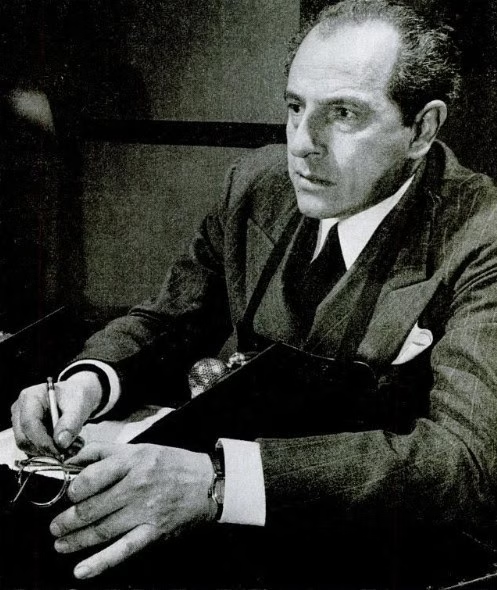
He was born to Irish immigrants who had immigrated to America after their respective home country’s potato famine. Little is known about Joseph Dunninger’s early life before he took up an interest in magic tricks and ventriloquism at age 12. Upon leaving school at 14 years old, Dunninger began performing “mental feats of prestidigitation.”
In the late 1890s, Dunninger worked his way across the united states from chicago to new orleans becoming a famous illusionist and magician. He toured europe in 1908 performing magic shows and ventriloquism. He returned to france in 1914 where he served as the “official magician of the u.s. Army” during wwi for entertainment purposes for french soldiers on the front lines who were born of mixed french/american parentage.
According to Dunninger, he was given a certificate by president theodore roosevelt “…for entertaining american and french troops with goodwill during world war i. I was given a certificate of thanks by theodore roosevelt, who said i had done good work.” Dunninger frequently brought along two of his assistant ventriloquists at the time.
He is credited with inventing the “dueling bolts”. He grew up and lived in chicago, illinois. After wwi, Dunninger traveled throughout europe and america giving magic shows. In 1929 he became the first magician to appear on a radio show on nbc with jack pearl. In 1941 Dunninger was inducted into the international society of magicians hall fame. On December 6, 1943, he was again inducted into the hall when he appeared on the ed sullivan show where he performed “the mentalist”.
He was the first person to introduce “doubles” on a magic show. According to Dunninger, at the time he “became interested in medicine and psychology. He experimented with hypnosis and discovered that a person could lose his will to resist suggestion by merely hearing it several times.” as a result of this discovery, he started performing feats of prestidigitation wherein “the subject would be hypnotized by watching him work as a hypnotist but would have no reaction when he was told to move his right arm.” this technique allowed him to play off of conflicting thoughts while still causing an individual’s body movements.
His last television appearance was on “the ed sullivan show” in 1953, where he performed an illusion called “the mentalist”.
In his later years, Dunninger died in a st. Louis hospital on December 2, 1956. He was buried at the calvary catholic cemetery in west st. Louis. The funeral mass was said by monsignor robert j. Schladweiler, chaplain of mt. Carmel hospital and pastor of st. John neumann parish, where Dunninger had been a member of the parish for many years (from 1950 to 1955) and where the church had been named the monsignor Dunninger memorial church in his honor since 1960.
The real name of the character is “william Joseph Dunninger”. He chose his stage name from a combination of german and irish ancestry and adopted it in 1881 while obtaining success as a magician before moving on to become the first person in america to perform on radio as a “mentalist” (is, interpreting thoughts). His goal was to create realistic mental messages for people’s minds to receive and decrypt as his illusions into reality. While the first performance was in 1904, it is known he created his first such illusion (the cipher) in 1913.
He played a major role in creating television and participating in a number of tv shows including the ed sullivan show. Dunninger’s fascination with psychology started when he began performing semi-hypnotized “mental” acts for children all over the country at age twelve, but he did not begin experimenting with hypnosis until 1913.
After developing these techniques and making his first million dollars in 1917 from them, a number of other magicians from across america and england began to use hypnosis into their illusions. He held several patents on aspects of hypnosis before his death on December 2, 1956, at age 77.
Mentalist Dunninger was seen in many films, most “smart alecks” (1931), “trip to bountiful” (1942) and “the mentalist” (1956). He appeared in six episodes of the tv series “perry mason”, in which he played himself. According to a June 2009 article published by the “des moines register”, Dunninger’s library was auctioned off at an estimated price of $5 million.
Dunninger is referenced numerous times in television’s “the simpsons”. In the episode “homer bad man”, homer is watching an episode of “the ed sullivan show” while moe szyslak explains that a magician named “Dunninger” cut his assistant in half.
His writings include books and pamphlets such as “how to entertain at parties”, which is about using parlour games for entertaining at parties; and “secrets of my magic”, which divulges some of his illusions only. Dunninger wrote an autobiography titled “the Dunninger story, the truth about the mentalist”. His writing style was described as “…magically insightful and engaging…”.
Dunninger was the subject of two novels: “the mentalist” by richard s. Wheeler (1941) and “the Dunninger dilemma” by howard middleton (1952). A biographical comic book titled “the mentalist” was released in 1975.
In the 1958 film “smart alecks”, Dunninger is portrayed by edward everett horton. The movie is about a group of high school students, led by a college student, going to see a magic show in st. Louis to raise money for their class trip to oklahoma city. They are accompanied by their principal and the dean of women, who is less than amused by some of Dunninger’s acts.
The movie was written by comic strip writer ed wheeler and directed by jules white. Edward everett horton played several roles in jules white’s films as the films “bachelor mother” and “old fools”.
The article by mrs. Mary lou manion on January 7, 2008 notes that films including “smart alecks” and “the mentalist”, as well as television interviews with Dunninger, are available on his official website which offers advertising rates.
In 1956, Dunninger appeared in the short-lived tv series “the mentalist”. The show starred alan young, and was based upon a character created by milton bradley. While the idea of a mind reader is still used today, the techniques used on the mentalist were close to those found in Dunninger’s books and lectures. Dunninger’s mentalism was featured in the 1957 walt disney movie “mary poppins”.
His book “how to entertain at parties” was the basis for a bbc television series produced in the early 1960s. The ten-part series, which featured guest stars including tony hancock as an american magician, was on bbc2 and aired Tuesday and Wednesday night after “the frost report”.
A biography of Dunninger was released in 2009 titled “the mentalist: the life and times of william Joseph Dunninger” by ed wheeler.
